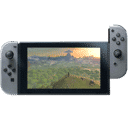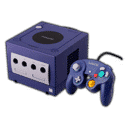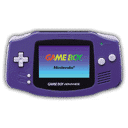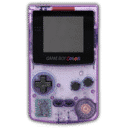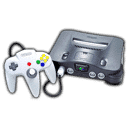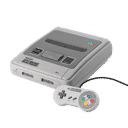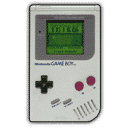
Summary:
Assassin’s Creed Shadows lands on Switch 2 with a clear goal: lock in a consistent 30fps while preserving the stealth-action feel that defines the series. To get there, Ubisoft trims ray tracing and relies on robust rasterization techniques, flatter lighting, reduced volumetrics, and lower-cost shadows. The result is a port that looks less dramatic than PS5 and Xbox Series X|S in outdoor scenes yet still reads well in motion, especially during stealth and exploration. Digital Foundry’s early read suggests there’s real promise here, citing stable performance as a foundation for a solid release on Nintendo’s hardware. If you’re coming from a 60fps console mode, you’ll notice the drop, but the Switch 2 build focuses on clarity, responsive inputs, and dependable pacing—key factors for a handheld-first experience. Expect sensible compromises: fewer screen-space effects, gentler material response, trimmed motion blur, and leaner crowd density in busy hubs. In return, you get a portable Assassin’s Creed that holds together during combat, infiltration, and traversal. It won’t replace the high-end versions, but for players who value flexibility—sofa, train, bed—this is a respectable, thoughtfully scoped take that keeps the core intact.
Assassin’s Creed Shadows on Switch 2 Evaluation
When you pick up an ambitious open-world release on a portable-capable system, you’re really asking two questions: does it run consistently, and does it still look like the game you’ve seen on bigger boxes? That lens frames our look at Assassin’s Creed Shadows on Switch 2. We’re focused on how Ubisoft budgets the console’s GPU and memory to hold 30fps across exploration, stealth, and melee chaos. The key is how the port maintains readability—faces, foliage, architecture—without drowning the image in shimmer or muddy post-processing. If you mainly play docked on a living-room TV, clarity and anti-aliasing matter most. If you’re handheld, motion stability and clean edges take priority. The Switch 2 version dials back expensive features, keeps the action smooth, and preserves the feel of sneaking across rooftops at dusk. You’ll notice fewer dramatic lighting moments than on PS5 or Series X, but what’s here is carefully chosen so the game still looks cohesive on a smaller screen. That’s the right kind of compromise for a platform that thrives on flexibility.

How Ubisoft’s recent Switch 2 work sets expectations
Confidence in a big Switch 2 port usually starts with a studio’s track record. Ubisoft’s recent technical showing on Nintendo’s newer hardware has raised expectations, proving that the publisher can scale modern engines down sensibly while respecting performance budgets. That context matters for Shadows because it shows a playbook: trim or remove ray tracing, lean on solid temporal anti-aliasing, reduce volumetrics and shadow cascade distances, and guard the frame-time budget. The headline is simple—keep gameplay intact, trim spectacle where it costs too much, and ensure the open world streams in cleanly. In practice, that approach lets dense hubs breathe without brutal hitching, and it keeps stealth encounters readable. The Switch 2 build follows that philosophy, pointing to a team that knows where to spend its budget and where to cut without breaking the vibe. That’s why many players are cautiously optimistic: this isn’t a rush job, it’s a disciplined mapping of big-console features to a portable-friendly target.
Visual targets on Switch 2: resolution, AA, and image stability
Image quality rises or falls on two pillars: resolution and anti-aliasing. On Switch 2, Assassin’s Creed Shadows prioritizes consistency over raw pixel counts. Expect a dynamic resolution window that scales with scene complexity—busy market squares, thick foliage, and rainy nights will nudge the scaler down, while interiors or sky-heavy scenes scale up. A robust temporal AA solution does the heavy lifting for edge stability, smoothing out sub-pixel shimmer on distant eaves and bamboo fronds. You’ll still see some flicker in fine geometry, but handheld play masks much of it thanks to the smaller panel. Docked, the image looks softer than PS5/XSX, yet the presentation remains cohesive, with the TAA doing a nice job of blending history-rich textures and patterned fabrics. The net effect is a picture that reads cleanly in motion, which matters far more at a 30fps cap than chasing higher numbers only to suffer stutter. It’s a balanced approach that keeps the world legible.
Why ray tracing is absent and what replaces it
Ray-traced global illumination and shadows deliver gorgeous light behavior on high-end machines, but they’re expensive. On Switch 2, Ubisoft opts out of RT and relies on tried-and-true rasterization plus a fallback global illumination path similar to the performance modes on PS5 and Xbox Series X|S. That means you’ll see flatter transitions from sunlit plazas to shaded alleys, with fewer micro-bounces of colored light. The upside is stability: cheaper GI and shadowing free up budget for AI, streaming, and animation. In practice, the scene still sells the mood—lantern glow, dawn haze, and moonlit rooftops remain evocative—but you won’t get the same nuanced bounce that makes metals and lacquered wood pop on high-end builds. For portable hardware, trading RT for predictability is sensible. It reduces the risk of hitching when you sprint from bright courtyards into shadowed interiors or when a fight turns messy with particles and crowd reactions.
Lighting, shadows, and volumetrics: the look and the trade-offs
This is where the artistic character of Shadows meets the reality of a 30fps budget. Outdoor scenes show simpler shadow cascades and lower volumetric resolution; fog, smoke, and morning mist look lighter, and shadow edges are softer. You may spot occasional temporal breakup in foliage, especially during wind gusts, but the image remains serviceable thanks to conservative AA. Interiors fare better: light pools, lantern cones, and specular highlights show clear intent even without RT bounce. Materials—silk, armor, lacquer—are less reactive than on top-tier consoles, yet they maintain enough contrast to guide stealth. The downgrade is most visible in sweeping vistas where mountains, rivers, and layered rooftops used to gain depth from volumetric lighting and RTGI. Here, the Switch 2 version leans on art direction and color grading to keep scenes readable. It’s not a showstopper, but it’s the cost of smooth traversal and consistent encounters.
Framerate behavior: 30fps targets, stability, and pacing
A steady 30fps can feel great if frame-time pacing is tight, and that’s the point of this port. Traversal, stealth takedowns, and crowd navigation hinge on responsiveness more than absolute speed. Early analysis indicates that Switch 2 holds frame-time well, even in rainy markets and bamboo forests—traditionally heavy spots. You’ll still feel the drop if you’re used to 60fps performance modes elsewhere, but input buffering and animation timing remain cohesive, which makes swordplay and parries reliable. The biggest test is streaming: sprinting on horseback into a busy district while weather shifts and guards react. Here, the game appears to keep shader compilation stutter in check and avoids obvious traversal hitches. If Ubisoft maintains this discipline at launch, Switch 2 owners get something precious in a portable open world: predictability. For handheld sessions, that’s far more valuable than chasing a fluctuating higher frame-rate that can’t stay locked.
Motion blur, texture filtering, and materials: what to expect
Per-object motion blur is absent, which removes a common crutch for masking low frame-rates and gives the image a crisper, sometimes choppier look during fast camera pans. That’s a fair trade on a 30fps target because it preserves UI clarity and helps you track enemies mid-fight. Texture filtering is serviceable: angled ground textures retain detail a few meters ahead but fall off quicker than on PS5/XSX. Materials still convey intent—matte vs glossy, cloth vs metal—but specular highlights are tamer. You’ll also notice simpler sub-surface scattering on skin and a more restrained screen-space reflection pass on water and polished wood. None of this breaks immersion, and handheld play softens edges enough to keep the art cohesive. If you’re docked, sit a bit farther back; the presentation benefits from distance, and the world’s color palette remains attractive on a mid-size TV.
World density, NPC AI, and streaming: open-world priorities
Open worlds live or die on how gracefully they stream in. On Switch 2, Ubisoft scales crowd density and reduces the heaviest ambient simulation beats to keep the CPU/GPU pipeline moving. You’ll still find lively hubs, patrols, and civilians reacting to your presence, but the busiest squares are a touch thinner than on the big boxes. The benefit is fewer stalls when you transition between districts or trigger chases. Asset streaming holds together; pop-in is present but controlled, with LOD swaps happening at sensible distances. The AI plays within its budget, prioritizing readable patrol paths and alert states over huge group behaviors that might spike frame-time. It’s a measured balance that protects the stealth loop: observe, plan, execute, escape. As a player, you’ll feel the world is alive enough without tipping the engine into expensive chaos at inopportune moments.
Docked vs handheld: which mode delivers better clarity
Handheld is where the presentation shines relative to expectations. The smaller screen masks the dynamic resolution dips and softens the edges that would otherwise stand out on a 55-inch TV. Colors and contrast read nicely, and text/UI remain legible. Docked play is absolutely viable, but you’ll notice softer detail and lighter volumetrics in wide shots. If you split time between modes, consider handheld for exploration and side quests, then docked for longer story sessions where the extra comfort of a controller and couch matters more than pixel-peeping. Either way, the port’s core strength—consistent pacing—translates across modes. It’s reassuring to bounce from TV to handheld and have the experience feel fundamentally the same, just scaled to the screen in front of you.
Audio mix, haptics, and input latency on Switch 2
Good audio sells atmosphere when visuals are dialed back. The mix here carries weight: wind through trees, the bustle of markets, and the metallic ring of blades all come through with clarity on handheld speakers and better still on headphones. Haptics are understated compared to Sony’s pad, but directional rumbles during parries and sprint impacts add texture. Input latency feels consistent with a 30fps target—responsive enough for parries and dodge windows, with no obvious spikes during streaming. If you’re sensitive to timing, prefer wired or low-latency Bluetooth earbuds and keep your docked setup free of TV processing modes that add delay. The result is a tactile experience that complements the visual budget: not flashy, but reliable, which is exactly what you want on a portable-leaning system.
Quality of life: load times, quick resume, and save management
Load behavior is more than numbers—it’s rhythm. On Switch 2, fast travel and death reloads feel brisk for an open world, which encourages experimentation. You’ll take more risks if you know resets won’t punish your time. Quick-resume style features vary by setup, but hopping back into a suspended session feels snappy, and save files sync cleanly between docked and handheld play. These touches matter: when a platform makes starting or resuming frictionless, you’re more likely to chip away at story beats on a commute or couch. Ubisoft leans into that rhythm here, which fits Shadows’ loop of scouting, infiltration, and exit. It’s not flashy, yet it’s the kind of polish that makes a 30-minute session feel productive and satisfying.
Side-by-side context: PS5/XSX vs Switch 2 differences that matter
Let’s set expectations plainly. On PS5 and Xbox Series X, you get modes that push resolution higher, run at 60fps, and—on the right hardware—enable ray-traced global illumination for beautiful light behavior. Those versions deliver richer materials, heavier volumetrics, and more dramatic day-night transitions. On Switch 2, the story is different: a 30fps lock, dynamic resolution, rasterization-based GI, and pared-back volumetrics. Yet the core game loop survives intact. Parkour remains smooth, stealth reads cleanly, and combat timing holds up. If you own multiple platforms and prioritize spectacle, the big boxes win. If you want the freedom to explore feudal Japan on a handheld that can still dock on the TV, the Switch 2 build is compelling. It’s the same narrative, the same missions, the same world—just tuned for consistency over flourish.
Practical tips to get a smoother experience on Switch 2
A few habits help the presentation: keep the system well-ventilated to avoid thermal throttling; if your TV has heavy post-processing, switch to a low-latency or “game” preset; when docked, sit a meter or two farther back than usual to let the image cohere; and favor headphones for cinematic missions where subtler audio cues guide stealth. In busy hubs with rain or smoke, take a breath between sprints—streaming lines welcome split-second pauses, and you’ll rarely feel micro-stutter if you don’t chain high-speed direction changes nonstop. Last, keep storage tidy; open worlds love fast, contiguous space. These aren’t magic tricks, just small habits that give the engine a touch more headroom and make the overall experience feel tighter in motion.
Who benefits most from the Switch 2 version
If you’re all-in on portability or share a living room where the TV isn’t always free, this version fits your life. It’s also a smart pick if you value predictable pacing over bleeding-edge visuals. Fans who love stealth and exploration will appreciate how stable frame-time helps with patience and timing. On the other hand, if your priority is visual drama and 60fps combat flow, the PS5 or Series X versions are stronger. The best part is that your progress and play rhythm translate cleanly across sessions—short bursts on handheld, longer arcs when docked. That flexibility is the Switch 2 advantage, and Shadows takes it seriously.
The bottom line on value
Value comes from time enjoyed, not raw teraflops. With Assassin’s Creed Shadows on Switch 2, Ubisoft aims for a consistent, good-looking 30fps that respects the platform’s strengths. You sacrifice some spectacle—especially lighting nuance and volumetric heft—but you gain a version that feels comfortable anywhere. Add in quick loads, a steady input feel, and readable stealth, and the trade-off lands in a sweet spot for portable play. It’s not the shiniest rendition, but it’s the one you’ll actually finish because it fits your day. That’s a win worth calling out.
Who should play AC Shadows on Switch 2?
This port is built for players who want the full map, story, and mechanics of Assassin’s Creed Shadows without anchoring themselves to a high-end TV setup. You’re choosing steadiness over sizzle, clarity over maximalism, and flexibility over pixel-perfect screenshots. Digital Foundry’s early impressions point to a thoughtful technical scope—no ray tracing, flatter lighting, trimmed volumetrics—in service of performance that stays on script. If that sounds like the right balance for you, jump in with confidence. If you chase RTGI, 60fps combat, and photomode showcases, keep your PS5/XSX version close. Either way, it’s encouraging to see Ubisoft build a Switch 2 edition that respects the hardware and the player’s time.
Conclusion
Assassin’s Creed Shadows on Switch 2 trades headline tech for reliability, and it pays off. With a stable 30fps target, sensible visual cuts, and a presentation that holds together in motion, this is a portable-friendly take that keeps stealth, traversal, and combat intact. It won’t wow pixel-peepers, but it will keep you playing—on the couch, on the train, or wherever your evening takes you.
FAQs
- Does Assassin’s Creed Shadows use ray tracing on Switch 2?
- No. The port relies on rasterization and a fallback global illumination technique, which keeps performance stable while delivering a cohesive image.
- What framerate does the Switch 2 version target?
- The target is a consistent 30fps. The focus is frame-time stability and pacing rather than higher but variable frame-rates.
- Is the lighting really flatter than on PS5/XSX?
- Yes. Without RTGI and with leaner volumetrics, outdoor scenes look less nuanced. The trade-off is smoother traversal and fewer hitches during busy encounters.
- How does it look in handheld mode?
- Handheld play suits this build well. The smaller display masks resolution dips and keeps edges tidy, making exploration and stealth enjoyable on the go.
- Should I pick Switch 2 if I already own a high-end console?
- Choose Switch 2 if portability and predictable pacing matter most. If you want 60fps modes and richer lighting, the PS5/XSX versions remain stronger visually.
Sources
- Assassin’s Creed Shadows: inside the tech – RTGI, shader compilation, TAA and more, Digital Foundry, March 2025
- Assassin’s Creed Shadows – PS5/Series X/S Tech Review, Digital Foundry (YouTube), March 2025
- Assassin’s Creed Shadows – Official Site, Ubisoft, 2025
- Ubisoft’s ‘Assassin’s Creed Shadows’ debuts with ‘mostly positive’ rating on Steam, Reuters, March 20, 2025
- Assassin’s Creed Shadows delayed again, Ubisoft cites ‘renewed focus on gameplay quality’, Polygon, January 2025


